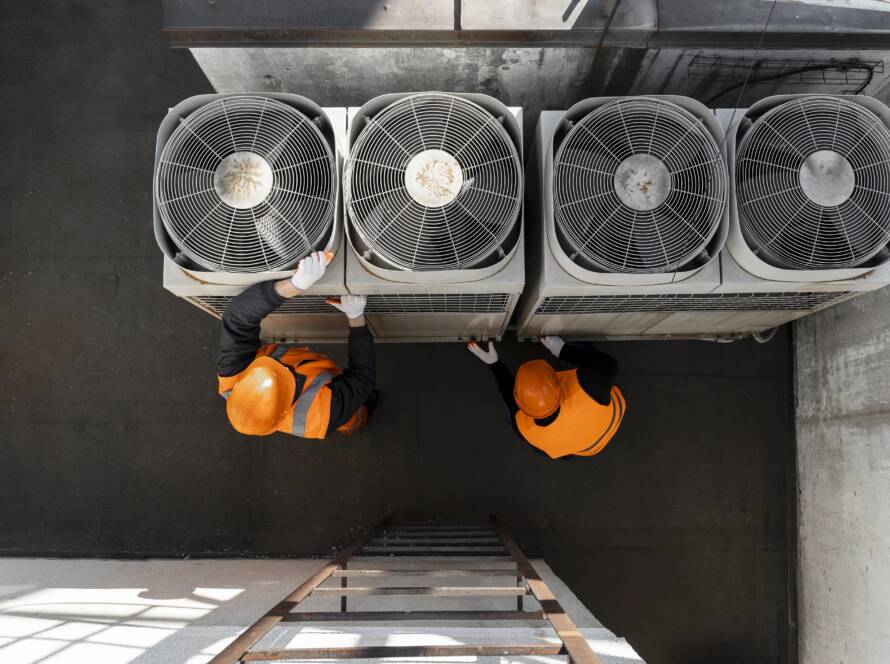1. The Evolution of Climate Control
For decades, HVAC systems operated on fixed schedules or manual settings. These systems maintained temperature but lacked adaptability. Whether it was a hot summer day or a cool evening, your AC or heater worked at the same rate, wasting energy and reducing efficiency.
AI introduces a new era of “adaptive comfort.” By combining real-time data from sensors with predictive algorithms, smart HVAC systems can automatically adjust temperature, humidity, and airflow based on occupancy, time of day, and even weather forecasts. The result? Perfect comfort with minimal energy waste.
2. Learning from Your Lifestyle
One of the most powerful aspects of AI-based HVAC systems is their ability to learn user behavior. Through continuous data analysis, these systems detect patterns — when you’re home, what temperatures you prefer, and how your habits change throughout the week.
For example, an AI thermostat might learn that you prefer cooler temperatures while sleeping and automatically adjust the settings before bedtime. It can also detect when the house is empty and reduce energy use until someone returns. Over time, these intelligent adjustments create a personalized environment that balances comfort and efficiency effortlessly.
3. Predictive Maintenance: Stopping Problems Before They Start
AI doesn’t just control the temperature — it also helps keep your HVAC system healthy. Predictive maintenance, powered by AI analytics, continuously monitors system performance and identifies potential issues before they become costly breakdowns.
Sensors collect data on airflow, energy consumption, and component performance. When something deviates from normal patterns, the system can alert the homeowner or technician immediately. This early detection prevents sudden failures, reduces repair costs, and extends the life of the equipment — saving both time and money.
4. Energy Efficiency and Cost Savings
Energy efficiency is at the heart of AI innovation. Traditional HVAC systems often run longer and harder than necessary, driving up electricity bills. AI-driven systems, however, analyze multiple factors — including outside weather conditions, room occupancy, and temperature variations — to optimize energy use in real time.
According to industry studies, AI-enabled climate control can reduce energy consumption by 20–40%, making it one of the smartest investments for both residential and commercial buildings. With rising energy costs and growing environmental concerns, this technology offers a sustainable path forward.
5. Integrating with Smart Homes and IoT
AI-powered HVAC systems are designed to work seamlessly within the smart home ecosystem. By integrating with IoT devices such as motion sensors, smart blinds, and voice assistants like Alexa or Google Home, they create a fully connected environment.
Imagine your AC lowering the temperature as your smart blinds close during the hottest part of the day, or your heating turning on just as you’re on your way home. These automated interactions make daily living more comfortable, efficient, and eco-friendly.
6. The Future of Intelligent Comfort
The future of climate control lies in deeper AI integration and greater automation. Emerging systems are beginning to use advanced machine learning and cloud-based analytics to predict not only indoor conditions but also human comfort responses. Soon, your HVAC system may be able to detect when you’re uncomfortable — even before you notice — and adjust settings automatically.
As AI continues to evolve, we can expect climate control systems that are not just reactive, but truly proactive, providing optimal comfort while minimizing environmental impact.
Conclusion: Smarter Living Starts with Smarter Air
AI has turned HVAC systems from simple machines into intelligent partners in comfort and efficiency. With predictive maintenance, adaptive learning, and real-time optimization, AI-powered climate control offers the best of both worlds — luxurious comfort and responsible energy use.
The future is clear: smarter air means smarter living.


